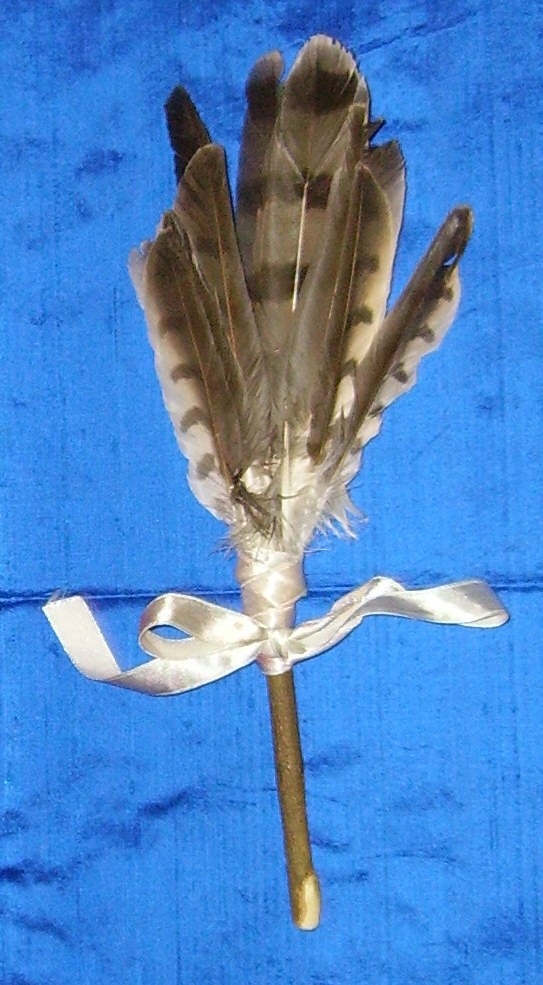
|
Article - 06 |
|
Working with Wood
For the past two years, the last two Springfield Sanctuary
workshops in October have been about the energetic
properties of wood and making either ogham sticks or
wands/me
It’s best to gather wood from living trees when they’re
asleep
during the winter months or being pruned. Some
can be gathered and worked fresh (holly and gorse are good
for this) but most are better left to dry for at least five
weeks before you try scraping or san
I dropped into
wood working
quite by accident really. My first ever wand was a short
piece of the special “ If you have a short piece of wood, and don’t want to use it as a few, you could make it into the handle of a smudging stick to waft incense or ceremonial smoke over a person, object or room for dedication, clearing or purification. Smudging sticks usually have feathers on the end and these can be gathered from any birds at any time. (I’m not suggesting you go and grab feathers from a bird, but pick them off the ground when you find them lying around!) Attach the feathers to the end of the stick either using string or and elastic band or ribbon or, if you have a large number, you may want to sew thread through the quill part of the feather to draw it into whatever shape you desire. Fasten the feathers and cover the handle with ribbon. I tie a bow at the end to ensure I have something to hang the smudge stick up with!
Then I
became
interested in larger “sticks” and started to sandpaper them
to see what happened. What I
You can make wands with both green and dry wood, depen
Wands
The length of a wand is historically the distance from your
elbow to your longest finger. You can cut to size when you
start working on it. A wand doesn’t have to be straight and
it doesn’t have to be a single branch, it can curve and
twist and have Ts or Ys at the end depending on what the
piece of wood tells you to do. I only tend to use my
penknife when I’m working on knots in the wood, or to shape
the tip or handpiece. You can also use inexpensive files to
make whirls or spirals in the wood – again…what you feel
called to do.
The sanding does take time and it can be quite hard work.
Start with the coarsest grain of sandpaper and work up to
the finest sandpaper you have. It’s using more than one
grade which really makes the wood smooth. Once you are
satisfied with the smoothness – you tend to get mesmerised
and can’t stop stroking the wood! – take some plain
sunflower oil or herbal infused oil or salve if you have
some and smooth it on until the wood stops soaking it up.
You just put a little on your fingers and keep rubbing. When you’ve finished, you can decorate your wand with whatever you wish, but I would keep to fairly natural materials. I have made smudging sticks with ribbons and feathers I’ve collected but you could thread seashells or glue in crystals if you really wanted to. (I don’t know how to handle glue, so I don’t tend to do anything which can’t be tied!
Each wood has a
Staves
Staff making is similar but different. Your staff should be
a thickness which is comfortable to hold and a length you
feel happy with. It can be shoulder or head height or taller
depending what you’re going to use it for. I have a large
hazel staff with runes inscribed on it for rituals, a much
shorter blackthorn staff with a monkjack deer antler on the
top which I use occasionally for stick dancing in Tai Chi
and a lighter willow staff which I use most of the time when
we’re working with sticks. Do remember that substantial
staves can kill someone.
I hope all this helps you to feel confident to try making
something. It’s great fun and very restful. You may want to
use a woodworking apron or a piece of old sheet over you
when you’re making it as you can get very
Have fun and let us know if you make anything! Sarah |
||||||
|
Content Copyright © 2006 - Springfield Sanctuary. All rights reserved |


